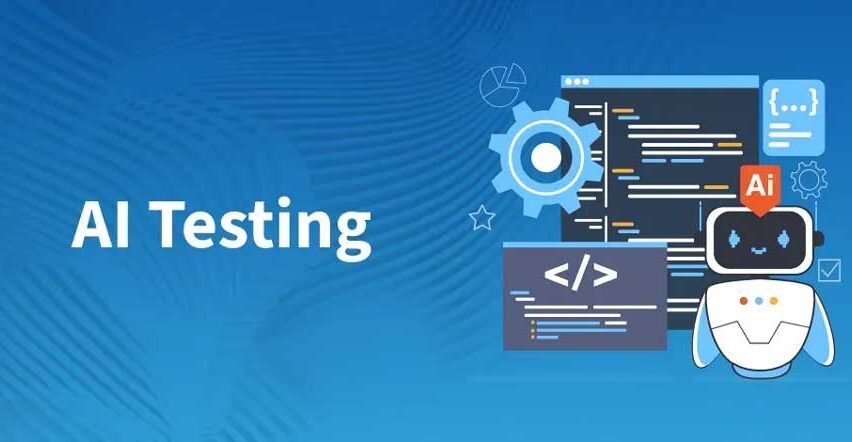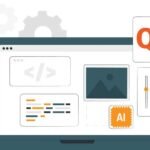In an ever-increasing, fast-paced digital world, demand for an increase in the speed and reliability of software releases has reached an unprecedented level. By the very nature of their limited efficacy, traditional testing approaches have a major challenge keeping pace with the speed and scope of evolving development cycles. This is where AI in software testing steps in—not as a future concept, but as a current game-changer. AI testing is a powerful functionality that can speed up the process, improve accuracy, and increase flexibility, transforming the way teams ensure quality throughout the software development lifecycle.
In this blog, we will see how AI is transforming the software testing lifecycle from intelligent test creation to predictive defect analysis so teams can deliver better software faster.
The Evolution of Software Testing
The process of software testing used to be labor-intensive, sluggish, and prone to mistakes. The introduction of automation tools such as Selenium and JUnit increased speed and reduced errors, but they were still dependent on human-written tests and required constant maintenance.
Today, AI allows machines not only to extract and analyze the data automatically but also to be adaptive, learn from new data, change, and choose the best strategy for testing at every stage.
AI in Test Creation: Smarter, Faster, and More Adaptive
One of the most exciting applications brought by AI in software testing is the automatic generation of test cases. AI makes it possible to create test cases that are more intelligent, quick, and flexible. Here’s how:
- Natural Language Processing (NLP): AI algorithms, particularly those that use NLP can read and understand requirement documents written in natural language. In fact, the algorithms can generate test scenarios, find edge cases and write the tests from these documents.
- Model-Based Testing: AI configures the Application Under Test (AUT) and builds a model based on assessing the AUT’s behavior and interactions. The AI is also then capable of generating a set of test cases from the behaved models that cover some previously accounted paths and states of the application.
- User Behavior Analysis: By assessing the real-world data collected from users interacting with the application, AI can identify the application’s most popular features and use that information to generate test cases that accurately simulate real-world user interactions. This guarantees that the software’s most important functionalities are adequately tested.
These capabilities substantially decrease the time that can be spent on the creation of tests, as well as increase the test coverage, especially when dealing with complex and updated applications.
Test Execution and Optimization with AI
Once the test cases are created , the next problem is running them effectively and efficiently. Traditional test execution leads to duplicate tests, slow execution times, and delayed feedback. Artificial Intelligence can improve the test execution challenges in a few ways:
- Test Prioritization: AI can evaluate historical test runs and previous bugs and learn which tests may fail or uncover critical issues. This means these tests can be proactively prioritized to uncover possible defects even sooner in the development process.
- Intelligent Test Selection: AI eliminates the need to execute every test in the suite after a code update. Instead, AI could identify which code changes affect the application and run the most relevant tests that are highly selective. This obviously improves test execution time while allowing the testing to still be covered and quality.
- Parallel and Distributed Testing: AI algorithms can intelligently run predefined tests across different environments and devices while balancing load and limiting bottlenecks. This enables more effective testing resources and quicker feedback.
- Anomaly Detection: AI tools can monitor test execution in real-time while identifying anomalies or unusual patterns with test executions. As an example, it can successfully identify flaky tests or potential environmental issues that could be invisible to the human tester.
This is exactly where smart test agents like KaneAI can help.
KaneAI is the world’s first GenAI-native testing agent, offered by LambdaTest lets quality engineering teams plan, author, debug, and evolve automated tests using natural language
Key Features:
- Natural‑Language Test Generation: Describe test scenarios in plain English, and KaneAI generates corresponding test scripts across web and mobile platforms.
- Multi‑Language Code Export: Automatically export generated tests in major frameworks/languages like Selenium, Playwright, Appium, Cypress, etc.
- AI‑Native Debugging: Offers GenAI-assisted debugging, root-cause analysis, and automated bug reproduction
- 2‑Way Editing & Smart Versioning: Edit in code or natural language; KaneAI keeps both in sync and versions each test iteration
Test Maintenance: A Persistent Challenge Solved with AI
Automated tests break often when an application changes, giving testers a considerable burden to always maintain the test scripts to the updated UI or business logic. With AI, we can counter this by using:
- Self-Healing Tests: AI-based frameworks are able to detect when a UI element has changed to automatically update the test script without any human intervention whenever a test fails due to the fact that the UI element has changed. The self-healing tests give developers confidence that everything has been updated, and just because there has been a small change in the UI, it does not mean the test should fail.
- Visual Testing:AI is able to perform visual testing of previously taken UI screenshot images against current images to detect layout, color and other visual bugs. It can also adapt to intentional design changes while still flagging unexpected ones.
- Predictive Maintenance:AI can provide insight as to which tests are likely to fail based on historical failure data with the tests. This allows teams to proactively update those tests, keeping the test suite lean and effective.
By reducing the effort needed for test maintenance, AI frees up human testers to focus on more strategic and creative aspects of quality assurance.
Defect Prediction and Root Cause Analysis
Perhaps one of the most forward-looking ways of using AI in software testing is in predictive defect analysis: the use of AI to not only predict where bugs are likely to occur but also root causes.
- Predictive Defect Detection:By analyzing historical defect data, code changes, and development methods, AI helps to identify modules or features that are likely to have defects. Due to this, testing efforts can be concentrated on high-risk areas, greatly increasing bug detection rates.
- Root Cause Analysis:When a test fails, AI can help determine the root cause by reviewing logs and test history. This will reduce the amount of time needed to fix errors.
- Trend Analysis and Reporting: AI can find trends and patterns in defect data, such as excessive amounts of regressions and features that are consistently unstable. This information helps development teams address many aspects of coding quality and will reduce defects in the future.
This predictive ability is like having a crystal ball in software quality. Instead of always reacting after bugs happen, a team can start to respond proactively to things that are likely to cause bugs before they reach the user.
The Place of Human Testers in an AI World
Given so many new possibilities, it is almost inevitable to think, what does this mean for human testers?
The solution is not to replace but to augment. AI handles all the tedious and data-driven tasks, so human testers are free to innovate, empathize, be domain experts, and define best practices.
Human testers are still very important in:
- Exploratory Testing: Human testers understand users and their behavior, can think outside the box in ways AI cannot, and are skilled at finding edge cases AI would not consider.
- Test Strategy: Human testers design the quality assurance framework and assess where AI should and should not be considered and assist AI with quality performance.
- User Experience Testing: Human testers evaluate usability, accessibility, and user satisfaction, where human opinion matters and needs sensitivity.
In short, AI will help maximize the reach of human testers and allow them to consistently get more work done in less time with a higher quality of software.
Challenges Of Using AI in Software Testing
Challenges of AI in software testing include:
- Data Quality: If the data quality is poor, the AI outcomes will also be poor.
- Trust: AI-driven decisions can actually be untrustworthy because they are often seen as a “black box.”
- Integration: AI tools must seamlessly integrate into existing workflows and tools.
- Skill Gap: Testers will need to learn new skills in AI and data analytics.
Despite these challenges, the long-term advantages of AI in software testing, reporting and analytics definitely outweigh the disadvantages as the technology becomes more advanced.
The Future of AI in Software Testing
Looking ahead, we can expect the use of AI in software testing to continue to grow. Here are a few potential areas for development:
- Autonomous Testing: AI systems that take complete control over the testing life cycle, including creating, running, updating, and ending tests with little need for input from human testers.
- Continuous Learning: AI models will be able to learn from ongoing input from new code, the way users interact with it, and insights gained from the results of tests, and inform future testing strategies while tests are still running.
- Hyper-Personalized Testing: Tests developed by AI such that they take the individual needs of users into consideration, including preferences, behavior, and environment.
- Testing AI: As more applications start to use AI, we will need to test AI models as well, particularly in the areas of bias, fairness, and reliability. This will become an area of specialization for testing.
The convergence of AI and software testing is a vibrant and rapidly changing field packed with possibilities. Companies that welcome this transformation will enhance the quality of their software while also speeding up innovation, giving them an advantage in the marketplace.
Conclusion
AI has completely transformed how we approach quality assurance and software testing. From auto-generating test cases to driving efficiency and predicting where bugs will likely emerge, AI is ultimately bringing improvement to every level of the testing lifecycle. As a result, we are all benefiting from a reduction in manual effort, accelerating test cycles, and discovering a level of accuracy and insight we would have only dreamt of before now.
Nevertheless, success in AI is reliant upon the right environment, quality data, and a clear understanding of AI’s strengths and weaknesses, and perhaps most importantly, a new way of thinking from “AI is going to replace me” to “AI is going to enhance my ability to deliver quality software.”
As AI continues to evolve, the line between testing and intelligence will blur, allowing us to move to a point where software tests itself with intelligence, precision, and flexibility. And we’re only just getting started with AI. The journey has just begun, and it promises to be both exciting and transformative.



